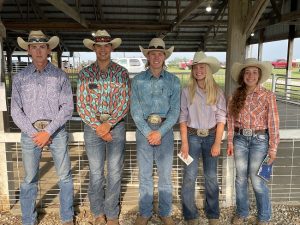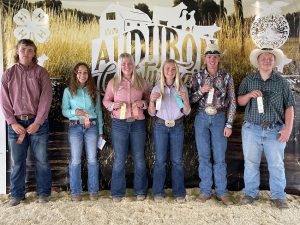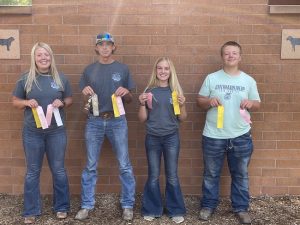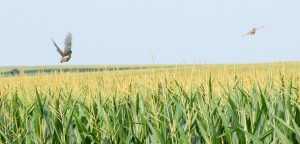CLICK HERE for the latest market quotes from the Iowa Agribusiness Network!
CLICK HERE for the latest market quotes from the Brownfield Ag News Network!
CLICK HERE for the latest market quotes from the Iowa Agribusiness Network!
CLICK HERE for the latest market quotes from the Brownfield Ag News Network!
(Radio Iowa) – If your holiday weekend plans involve paddling kayaks or canoes, there are areas of Iowa which the experts say you should absolutely avoid. Todd Robertson, paddling instructor and outreach coordinator for Rivers Programs at the Iowa D-N-R, says the recent rains across northern Iowa have led to near-record flooding on some waterways in that region. “In northeast Iowa and eastern Iowa, we have rivers that are extremely high and dangerous. Paddling on those is not a good idea at this time,” Robertson says. “Then, you look at rivers here in central or western Iowa and we’ve got rivers that are actually still super low.”
Swollen rivers are very powerful and produce unpredictable currents along with tons of wood debris coming downstream to form big piles of limbs called “strainers.” Those strainers are the number-one hazard on Iowa’s rivers and streams, Robertson says, and they can be deadly. “You really have to have paddling skill to know how to navigate around these things,” Robertson says. “It’s a lot easier to navigate around them when the rivers are a little bit lower, but when you’re on a high, fast river after a rainfall, you can easily get sucked into these things.”
All paddlers, especially those who are relatively inexperienced, are urged to check with a local county conservation board to learn about water conditions before heading out. “This weekend, depending on what part of the state you’re in, you’re going to want to stick to just paddling on the lakes and just enjoying the flat water, because a lot of these rivers are too high,” Robertson says. “Here in central Iowa, if you look at the Raccoon River, it’s still extremely low to where you may still bottom out.”
No matter how good of a swimmer you might be, he says everyone who’s on the water should wear a life jacket.
DES MOINES, Iowa – The unofficial end to summer this weekend is expected to draw thousands of Iowans out to their state parks and waterways. The weekend weather forecast appears to be favorable for various outdoor activities. The DNR reminds users to abide by all safety measures in order to have a safe and enjoyable Labor Day holiday weekend.
Boating Safety
Boaters headed out to a lake, river, pond or any other waterway should adhere to the following safety tips:
Beach & Swimming Safety
Wherever you choose to swim this Labor Day weekend, whether it’s a backyard pool, a pond or lake, or a public pool, please follow these safety tips:
Because the beaches are busier this summer, staff are encouraging visitors to utilize the non-peak times and days. For the busier beaches/parks, the non-peak days usually include Sundays through Thursdays, and Fridays before 5:00 pm. If you plan to go to the beaches on Saturdays, the non-peak hours are usually before noon.
Parks staff may temporarily close parking lots when they become full and limit the number of visitors at that point. The DNR recommends visitors go to another nearby park or beach that is not as heavily populated. Visitors are reminded to only park in designated parking spaces. All violators will be cited by staff.
State Parks/Campgrounds Safety
This weekend will be another very busy one if you plan to visit a state park and campground, use these safety tips to ensure an enjoyable time:
Paddling Safety
Whether it be tubing, kayaking or canoeing, paddlers are enjoying the splash of the water, scenic views, and wildlife viewing from Iowa’s rivers, rapids and streams, stay safe each time you paddle with these simple safety tips:
The Guthrie County Fair is underway in Guthrie Center, through Sept. 5th. Gate admission daily is $10. Carnival rides and Grandstand entertainment are FREE.
Today’s schedule (Sept. 3rd) includes:
8:00 AM 4-H/FFA Swine Show
8:30 AM 4-H/FFA Horse Show
8:00 AM – 6:00 PM 4-H/FFA Education Center Open
12:30 PM 4-H/FFA Sheep & Goat Show
6:00 PM Clover Kids Show
7:00 PM Rodeo at the Grandstand (Presented by Grand River Rodeo)
This weekend’s activities include:
Saturday, Sept. 4th –
10:00 AM Parade
5:00 PM Tractor & Pickup Truck pulls (at the Grandstand)
Sunday, Sept. 5
6:00 PM Queen Coronation (Grandstand)
7:00 PM Figure 8 races (Grandstand)
For more information, see the Guthrie County Fair website, or follow them on Facebook.
(Radio Iowa) – The pheasant season last year saw hunters take the second-highest number of pheasants in more than ten years — and the numbers are lining up for a repeat. D-N-R wildlife biologist, Todd Bogenschutz oversees the roadside survey and says one area stood out. “Up in the northwest, it could be some of the best hunting they’ve seen in years,” he says. Southeastern and eastern Iowa saw fewer birds in this year’s survey — while the overall outlook pretty much mirrored 2020. Bogenschutz says in 2020 they average 20-point-three birds on each route and this year they average 20-point-one birds.
The results showed three of the nine regions — northwest, north-central, west-central averaged at or more than 30 birds on each route — which hasn’t happened since 2007. Bogenschutz says the spring season is always key in determining how many new birds live into the fall. “I think the nesting season overall was generally pretty good. But last winter was particularly tough on southern Iowa,” according to Bogenschutz. “we had snow, and then it warmed up and melted, and then we went sub-zero and got some freezing rain and that happened a couple of times — to the point that by the end of February in southeast Iowa, full-grown adults were walking on top of the snow, and not breaking through.”
Bogenschutz says he’s not too concerned about the recent flooding, as flooding has the most impact in the spring nesting period. “So, April into May and maybe the first part of June. After that flooding doesn’t have near the impact once the chicks are out and grown up a little bit,” Bogenschutz says. “The flooding we had in July and August shouldn’t have hurt the newly hatched chicks as much.” He expects at minimum a repeat of the pheasant harvest from last year. “I’m expecting we’ll have a harvest of around that 250 to 300-thousand mark again,” Bogenschutz says.
The pheasant season opens on October 30th and runs through January 10th.
(Radio Iowa) – College football season opens in Iowa tomorrow (Saturday) and buses carrying two Iowa teams will also carry new branding. The Iowa Soybean Association and the Iowa Biodiesel Board are partnering with Windstar, the bus company that provides transportation for the Iowa Hawkeyes and Iowa State Cyclones. Iowa Biodiesel Board executive director Grant Kimberley says the buses run on biodiesel and it says so in big letters down the side. “These buses transport these teams to home games to the stadium and away games, as well,” Kimberley says. “It’s not just for football season, it’s also utilized at other times of the year for some of the other sports teams. These buses get some miles on them and they go all across the country.”
He says the partnership and the rebranding of the buses is a great way to educate people about biodiesel. “We can reach a wide audience this way,” Kimberley says. “People that may not normally see a lot about agriculture or about biofuels. It’s a way to get a good cross-section of people.” The Hawkeye and Cyclone team buses have a broad reach, all the while advertising one of Iowa’s biggest biofuels. “People told me that they’ve seen these buses in places like Los Angeles and Denver and even driving by the Capitol in Washington D.C.,” Kimberley says. “They do get around a lot of different places and that’s why we think it’s a great partnership with the university.”
Iowa’s farmers are expected to harvest more than 525-million bushels of soybeans this fall. Every bushel will enhance Iowa’s standing as the nation’s top producer of biodiesel.
(Radio Iowa) – Congresswoman Cindy Axne, a Democrat from West Des Moines, says she’d like to see a proposed tax change get rolled back, so it only applies to the country’s richest families. President Biden has proposed treating the transfer of inherited property as if it were a sale, so capital gains taxes would be collected. Individuals would be able to inherit a million dollars worth of property and couples up to two million dollars worth of land or buildings, but Axne says that’s not a big enough exemption for family farms.
“Let’s say the farm was, I don’t know, $1000 an acre when they first got it and now it’s $7000 — so it’s a $6000 increase per acre and they’ve got 500 acres. You’re talking a lot of money that you’ve got to pay the taxes on. If you do that, you may end up having to sell some of the land to pay the taxes,” Axne says. “What we don’t want is to sell family farms.”
Axne says small business owners also could be prevented from passing their business onto the next generation. “I look at this as a Main Street issue,” Axne says, “and we’ve got to get this fixed.” Axne says it’s not just an issue in rural America. She cites as an example a couple who bought a property in the Bronx and have run a bodega for decades, as they would be unlikely to be able to pass the small convenience store onto their children or grandchildren.
“Let’s say they bought it back in the day for a couple of hundred thousand dollars 50 years ago and now with all the gentrification, everything in the Bronx, it could be worth $4 million,” Axne says. “They will not be able to pay the taxes on $3.8 million. Who’s going to come in there? 7-Eleven — it’s going to be a large company — so this is an issue across this country.”
Axne made her comments after a meeting in Adel with representatives of more than a dozen farm and ag-related organizations.
(Atlantic, Iowa – Story by Atlantic FFA reporter Aspen Niklasen)
Over the summer, the Atlantic FFA participated in several different livestock judging contests across the area; all of which at county fairs. Livestock judging is all about analyzing animals, whether that be beef, swine, sheep, or goat, and how they compare with one another as well as how they compare to an ideal standard. At most local events, teams up to four will place four animals in the most optimal order, while at state events and above, contestants will have to give specific reasoning for their choices.
The first contest that members attended was at the Adams County Fair in Corning. Team members Aspen Niklasen, Bryan York, Daniel Freund and Dylan Comes placed 7th overall. The next contest the Atlantic FFA chapter attended was at the Montgomery County Fair in Red Oak. Team members consisted of Daniel Freund, Bret Dreager, the team placed 4th overall. McKenna placed 5th overall in the Individual portion of the contest.
The third contest of the season was the Audubon County Fair in Audubon. Two teams competed in the contest, Team two consisting of Reid Woodward, Lola Comes and Malena Woodwar placed 8th. Team one that consisted of McKenna Sontag, Dylan Comes and Brett Dreager placed 9th overall. Individually Malena Woodward placed 6th overall and McKenna placed 10th.

Adair Co Fair Left to right
Cooper, Daniel Freund, Dylan Comes, McKenna Sonntag, Lola Comes

Audubon Co Fair Left to right
Ried Woodward, Lola Comes, Malena Woodward, McKenna Sonntag, Dylan Comes, Bret Dregaer

Cass Co Team 1
Malena Woodward, Cooper Jipsen, McKenna Sonntag, Bret Dreager
At the Adair County Fair, the team of at the Adair County Dan Freund, Dylan Comes, Cooper Jipsen, Lola Comes, McKenna Sonntag placed 5th. Newcomer to the team Lola Comes said, “My focus has been cattle because that is what I love to work with, but livestock judging has opened my eyes to other varieties of livestock. “
Last warm up before Districts was Page County Fair at Clarinda. Dylan Comes led the team with a 9th place individually, Daniel Freund, Cooper Jipsen and McKenna Sonntag placed 7th. Sonntag said, “Livestock judging was a great opportunity to learn even more about each livestock species and have a lot of fun together “
The Southwest FFA Districts Contest was held at the Cass County Fair this year. Atlantic FFA team 1 consisting of Malena Woodward, Cooper Jipsen, McKenna Sonntag and Bret Dreager placed 5th at the SW District FFA livestock judging contest at the Cass County Fair. Malena placed 4th individually and Cooper placed 9th. Atlantic FFA team 2 consisting of Ried Woodward, Brock Henderson, Lola Comes and Dan Freund placed 7th at the SW District FFA livestock judging contest today at the Cass County Fair.
Finally at the Iowa FFA State Livestock Judging Career Development Event, McKenna Sonntag, Dylan Comes and Malena Woodward placed 25th out of 46 chapters earning a Silver rating. Atlantic FFA Advisor Mr Eric Miller said, “the contest was very competitive. There were only 25 points separating 10th and 25th. I am very happy with how far the team has come this year. The three individuals competed in placing breeding and market classes of beef, swine, sheep and goats; keep/cull and oral reasons classes; and a general knowledge test.
In the upcoming months Atlantic FFA will attend 2 more Livestock Judging Contests, the Guthrie County Fair and the Clay County Fair. If you are interested, please talk to Mr. Miller or any of the FFA Officers. Anyone is welcome to join FFA.
(All photos are courtesy Atlantic FFA Advisor Eric Miller)
(Atlantic, Iowa) – Atlantic Police Chief Dave Erickson, Wednesday, spoke to the City Council with regard to permits for bow hunting in the City limits. The hunting season begins Oct. 1st.
The Chief says the City is doing the Doe depredation program, also.
If you aren’t already certified to bow hunt in the City, you will need to contact Chief Erickson and qualify to do so. The numbers of hunters taking advantage of the program have declined over the past couple of years, and the herd has grown as a result. 
(Iowa DNR News) – Iowa streams are swollen and swift with consistent rainfall the past several days. Some rivers are already dangerously high, and more rivers could rise fast with chances of rain forecast this week. “We encourage all paddlers, especially new and inexperienced paddlers, to stay on lakes and flat-water while the rivers are high due to heavy rain”, said Todd Robertson, paddling instructor and Outreach Coordinator for Rivers Programs at the Iowa DNR.
“Swollen rivers are super powerful and have unpredictable current along with tons of wood debris coming downstream to form deadly “strainers”, said Robertson. He said that even experienced paddlers should stay off of rain swollen rivers. “If you get into a situation where you are struggling and fighting the current, the river will win”, said Robertson. Always know your rivers conditions before you go paddling. For the latest river conditions, contact Iowa DNR Customer Service at 515-725-8200 or your local county conservation board for updates.
**********
The good news for Iowa’s cottontail rabbit hunters is that Iowa has an abundant rabbit population, with the southern and east central part of the state seeing the best overall numbers. The better news for hunters is Iowa’s cottontail rabbit season begins Sept. 4 statewide. “It should be another good year for rabbit hunting not only for experienced hunters, but for young or novice hunters who can learn necessary skills with little competition,” said Todd Bogenschutz, upland wildlife research biologist for the Iowa Department of Natural Resources. Last year, an estimated 16,000 hunters harvested more than 76,000 cottontail rabbits. The most popular way to hunt is with a shotgun walking brushy areas with grass next to crop fields in the morning or evening. It can be done individually or with a group of friends.
Rabbit hunting does not require a significant investment or high tech equipment, just a shotgun and some shells. Rabbit is a lean, low fat meat and popular table fare considered a delicacy in many culinary circles. Cottontail rabbit season is Sept. 4 to Feb. 28, 2022. The daily limit is 10 rabbits with a possession limit of 20. Jackrabbit season is closed. While wearing blaze orange clothing is not required to hunt rabbits, it is recommended. Shooting hours for rabbits is sunrise to sunset. Iowa’s cottontail rabbit population estimates are included in the recently completed August roadside survey of upland wildlife species at www.iowadnr.gov/pheasantsurvey.
Local squirrel populations are variable depending upon acorn production. In areas of lower annual acorn production look for patches of hickory trees as an excellent alternative. Squirrel hunting is an inexpensive and exciting way to get introduced into hunting. Those new to hunting can gain valuable woodsmanship skills as squirrels will twist and turn hunters through the woodlands. “One beauty of squirrel hunting is if you mess up and spook a squirrel there is usually another one just down the ridge, this provides lots of opportunities for success,” said Jim Coffey, forest wildlife biologist for the Iowa DNR. “Experienced hunters often say that they haven’t hunted squirrels since they were a kid. Well, this is the year to be a kid again. Get yourself outside chasing squirrels and bring someone new to hunting along. Squirrels are definitely an underutilized resource.”
Be prepared during early squirrel season for mosquitoes and other flying pests, Coffey said, and try and hunt in the early cool mornings as squirrels will be very active before the heat of the day. Hunters will generally find plenty of squirrels and little competition. This would also be a good opportunity to do some scouting for a spring turkey hunt or to look for whitetail deer rubs before bow season. “These honed skills will make you an overall better hunter. Many of the skills needed for squirrel hunting are also used for spring turkey hunting,” Coffey said. Last year, nearly 13,000 squirrel hunters harvested approximately 76,000 squirrels.
Squirrel season is Sept. 4 to Jan. 31, 2022, with a daily bag limit of six total or combination of red fox squirrels or eastern grey squirrels and a possession limit of 12. Fox squirrels are generally found in more open pasture timber and woodlots whereas grey squirrels tend to be in more mature timber. There is no restriction on shooting hours. Hunters looking for places to go rabbit or squirrel hunting should use Iowa’s online hunting atlas at www.iowadnr.gov/hunting, with more than 600,000 acres of public land that allows hunting. Hunters have the opportunity to hunt these species on additional acres of private land enrolled into the popular Iowa Habitat and Access Program (IHAP).
Enrollment in the program is at an all-time high of nearly 40,000 acres. The IHAP allows hunters access to the portion of the property covered by the agreement, from Sept. 1 to May 31. Conservation officers will provide assistance and enforcement, if needed.
(Iowa DNR News) – Results of Iowa’s 2021 pheasant population survey shows the impact that weather can have on the popular game birds. In the regions where less snow fell, the counts were better; where more snow and ice fell, the counts were worse. Overall, the annual August roadside survey found Iowa’s statewide pheasant population to be essentially unchanged from 2020 at 20 birds per 30-mile route. Within the survey, results showed three of the nine regions – northwest, north-central, west central – averaged at or more than 30 birds per route, which is the first time that has occurred since 2007, and the central region saw a 25 percent increase. The northeast and east central regions were about at their 10-year survey averages. The full report is available at www.iowadnr.gov/pheasantsurvey.
“Hunters can expect a good pheasant season for most of the state again this year, with the best hunting being north of I-80,” said Todd Bogenschutz, upland wildlife research biologist with the Iowa Department of Natural Resources. Based on the results of the August roadside survey, Iowa hunters can expect to harvest 250,000 to 350,000 roosters again this year, which would match the second highest bird harvest in the past 12 years. “Bird harvest relies heavily on the number of hunters in the field and last year, we saw an increase of 10,000 pheasant hunters over 2019 and that was reflected in our increased harvest,” Bogenschutz said. An estimated 62,000 hunters participated in 2020, the most since 2009. “The birds are there, so the harvest totals will depend on how many hunters return,” he said. 
While the pheasant count varied by region, the quail count was more consistent; unfortunately, it was consistently lower. Last winter’s snow and ice across southern Iowa’s quail range led to the drop in the quail population. “We’re at the northern fringe of the bobwhite quail range and when we have a winter with lots of snow and ice, the quail population is impacted,” Bogenschutz said. “Quail are still out there, but hunters are going to have to look for them.” The higher counts came from southwest Iowa. Hunters should focus areas where there is a good mix of shrubs, ag fields and weedy cover. Iowa’s partridge showed an upward trend in north central and northwest Iowa, but overall, the survey found the population to be essentially unchanged from 2020. Iowa’s rabbit population declined from 2020 but is still abundant with better counts coming from east central, southwest, south central and southeast regions.
The annual August roadside survey has been collecting data on Iowa’s upland game populations since 1962. Hunters have the opportunity to hunt these species on additional acres of private land enrolled into the popular Iowa Habitat and Access Program (IHAP). Enrollment in the program is at an all-time high of nearly 40,000 acres. The IHAP allows hunters access to the portion of the property covered by the agreement, from Sept. 1 to May 31. Conservation officers will provide assistance and enforcement, if needed.
Hunters who frequent land enrolled in the Conservation Reserve Program should be aware that the land was opened to haying as part of the drought protocol.